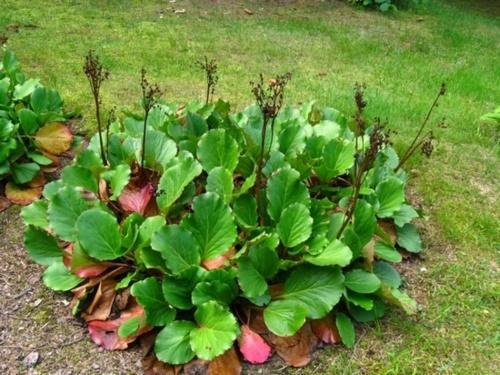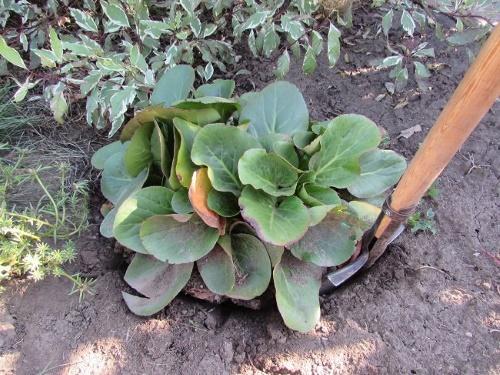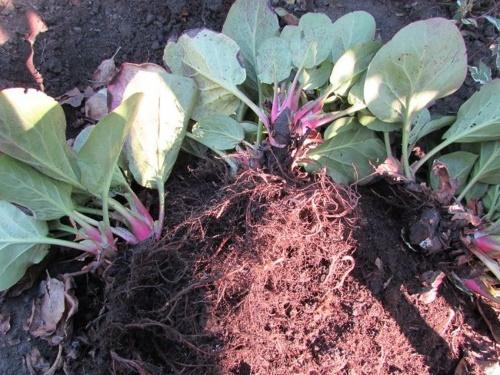Badan transplant is a guarantee of annual flowering for many years
 Badan can be safely called a primrose, because its wide leaves come to life with the first spring sun, and flower stalks soon rise above them. This is one of the most unpretentious crops, but in order for it to bloom annually, you will need a periodic transplant of badan. A perennial can grow in one place for up to 15 years, but during this time the bush grows strongly and completely displaces all neighbors. In addition, such a thickened meadow will not please you with anything but gorgeous leaves. In cramped conditions, the berry stops blooming, so it definitely needs a transplant. Thus, the plant can be rejuvenated as well multiply it by dividing it into divisions.
Badan can be safely called a primrose, because its wide leaves come to life with the first spring sun, and flower stalks soon rise above them. This is one of the most unpretentious crops, but in order for it to bloom annually, you will need a periodic transplant of badan. A perennial can grow in one place for up to 15 years, but during this time the bush grows strongly and completely displaces all neighbors. In addition, such a thickened meadow will not please you with anything but gorgeous leaves. In cramped conditions, the berry stops blooming, so it definitely needs a transplant. Thus, the plant can be rejuvenated as well multiply it by dividing it into divisions.
When is it better to transplant

Badan tolerates transplanting well and almost always successfully takes root in a new place. You can carry out the procedure:
- in spring, before flowering;
- autumn, but not later than early October.
Some gardeners transplant and divide shrubs even in summer. In general, this is also a valid option, but provided that the summer is not hot. Shade-loving incense after the summer procedure may start to hurt and die. If there is an urgent need to transplant it in the summer, the bushes must be shaded and generously mulched.
Badan transplant step by step
 The roots of the bushes do not go too deep into the soil, so even the oldest bush will be easy to dig up. To move a plant to a new location, you must:
The roots of the bushes do not go too deep into the soil, so even the oldest bush will be easy to dig up. To move a plant to a new location, you must:
- Dig in the overgrown bush in a circle, slightly stepping back from the deciduous rosette.
- Pry it off with a shovel and remove.
- Carefully loosen soil residues from the roots so that you can see where the sockets separate.
- Tear off or prune dry leaves with pruning shears.
- Divide the bush into sections (well-formed leaf rosettes). Strongly small ones should not be separated - they are difficult to take root. Better to leave them at an older outlet.
- To prevent diseases, rinse the roots in a weak solution of potassium permanganate.
- In a new place, dig a landing hole according to the size of the divisions. There should be free space within a radius of 30 cm - the berry grows quickly. Water them liberally.
- Plant the bergenia, deepening the rosettes to the beginning of the leaves.
Particular attention should be paid to badan, which is transplanted in the fall. It is advisable to cover such bushes with leaves for the winter. The first year or even two after transplanting the berry may not bloom. But, when he adapts to a new place, he will resume his gorgeous bloom again.